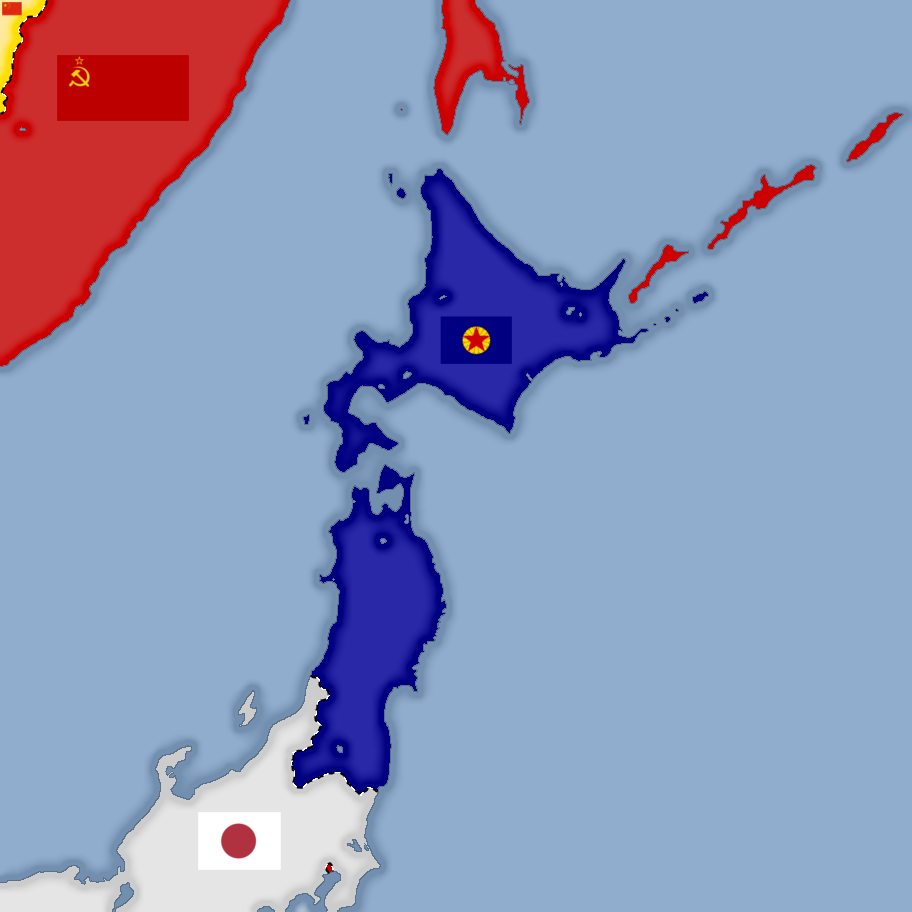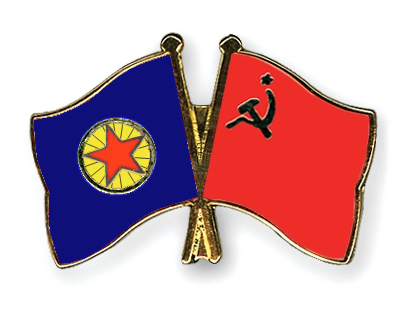Official representative of
Democratic Republic of Ezo on MyAnimeList.net
Form of government: cybernetic socialist republic;
Capital: Sapporo;
Official languages: ainu (cyrillic script), japanese (katakana and cyrillic-based scripts);
Biggest cities: Sapporo, Sendai;

Since the proclamation of September 25th, 1948, in the Soviet occupation zone of the former Japanese Empire, the Democratic Republic of Ezo (Japanese: 蝦夷民主共和国) has followed the path of socialism. Formed from the territories of Hokkaido and Tohoku, Ezo emerged amidst the global post-war restructuring, as Japan, like Germany, was divided into zones controlled by Allied powers. The northern territory fell under Soviet influence, leading to the establishment of a socialist state whose founding principles focused on collectivist ideals and a planned economy.
In the early years, the young state faced significant challenges. The nation undertook sweeping agrarian reforms to consolidate lands into collective farms and cooperatives, a policy aimed at quickly achieving food security and economic independence. Meanwhile, industrialization was prioritized, with the establishment of state-owned factories that specialized in heavy machinery, steel production, and later, electronics. Ezo’s early alignment with the USSR also meant that it benefited from Soviet technical and material support, quickly becoming an industrial center in the region.
Throughout the 1960s and 70s, Ezo became a model of cybernetic socialism, influenced by the success of Soviet cybernetics research and other Eastern Bloc countries' advancements in computing and automation. The state invested heavily in technological infrastructure to manage its economy, using early computer networks to monitor production quotas, resource allocation, and economic planning. In the 1970s, the Ezo Cybernetic Planning Bureau was established, dedicated to optimizing resource allocation and production efficiency. By leveraging real-time economic data and feedback loops, Ezo’s leaders claimed they were achieving unprecedented economic stability and reducing waste within a centrally planned system.
Ezo's success in technological and economic development began to set it apart not only from its capitalist neighbors but also from its socialist counterparts. By the 1980s, Ezo had established a reputation as a “Technocratic Socialist State,” employing a hybrid model of government that combined traditional socialist leadership with councils of engineers, economists, and cybernetic experts. During the global oil crises, the state’s planning efficiency allowed Ezo to weather economic challenges better than other nations, thus strengthening its self-sufficiency and increasing regional influence.
Despite mounting tensions, Ezo maintained a delicate neutrality, balancing between the USSR and China while engaging in cautious diplomatic relations with the southern, U.S.-aligned Japanese Republic. However, throughout the late 20th century, escalating Cold War tensions meant that the nation faced strict embargoes from capitalist countries. Ezo responded by fostering an internal scientific and technological culture, developing independent advancements in robotics, AI, and cybernetic applications.
Entering the 21st century, Ezo embraced a model of “Cybernetic Socialism 2.0,” using advances in AI and interconnected cybernetics for economic management and social services. By 2024, the country had implemented a decentralized network of cybernetic councils that allowed local factories, farms, and communal centers to autonomously adjust to production needs and resource availability in real time, guided by state policies but optimized by complex algorithms. This sophisticated system has not only solidified Ezo’s status as a highly developed economy but has also attracted interest from other socialist and neutral countries eager to emulate its model.
Today, the Democratic Republic of Ezo stands as a testament to the endurance of socialist ideals adapted through technological innovation. With a high standard of living, universal healthcare, and advanced cybernetic infrastructure, Ezo remains a formidable force in the ongoing Cold War, a model of technological socialism competing against capitalist powers across the globe.












All Comments (0) Comments